NANOLAB Educational materials: English version
Materiali didattici NANOLAB in lingua inglese
On this page you will find the collection of teaching materials, teacher guides and student cards in the English version related to all NANOLAB labs .
We have built simple, safe, easily replicable experimental protocols, even in a normal school laboratory. Tte experiments allowing students to experience the properties of matter at the nanoscale, in a experimental, inquiry-based teaching approach , hands-on and interdisciplinary . All protocols have been tested by students and teachers.
The materials are distributed under the creative common 4.0 license
In questa pagina trovate la raccolta dei materiali didattici, le guide docenti e le schede studenti nella versione inglese relativi a tutti i laboratori di NANOLAB.
Abbiamo costruito protocolli sperimentali semplici, sicuri, facilmente replicabili anche in un normale laboratorio scolastico, permettono agli studenti di toccare con mano le proprietà della materia alla nanoscala, in un approccio didatticosperimentale, inquiry-based, hands-on ed interdisciplinare. Tutti i protocolli sono stati sperimentati sul campo da studenti ed insegnanti.
I materiali sono distribuito con licenza creative common 4.0

Responsibility of safety: the person performing the experiments have to verify, take care and observe the safety regulations in the specific context and for the specific equipment used.
 E’ responsabilità di chi esegue gli esperimenti verificare e curare l’osservazione delle norme di sicurezza nello specifico contesto e per le specifiche attrezzature utilizzate.
E’ responsabilità di chi esegue gli esperimenti verificare e curare l’osservazione delle norme di sicurezza nello specifico contesto e per le specifiche attrezzature utilizzate.
The laboratories are divided into thematic areas and can be carried out individually or integrated into a path, exploring specific aspects of the thematic area.
I laboratori sono suddivisi in aree tematiche e possono essere svolti singolarmente o integrati in un percorso, approfondendo specifici aspetti dell’area tematica.
Memory metals
Materials for Teachers
 Teacher guide NITI
Teacher guide NITI
 Teacher guide-NITI short
Teacher guide-NITI short
Materials for laboratories
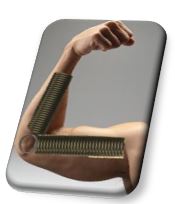
The shape memory metals are examples of smart materials , materials that change properties (shape, color, etc.) in a controlled, predetermined and reversible way, as a results of an external stimulus. We are inspired by the spectacular phenomenon of shape memory of a readily available Nickel and Titatio alloy, subjected to heating: in these laboratories the reaction of the metal to temperature variations and mechanical stress is studied.
The results are traced to the coordination of atoms at the nanoscale and to the austenite / martensite phase transition .
The student is thus guided to understand the macroscopic properties of a material at the nanoscale., such as elasticity, electrical resistance, sound transmission
I metalli a memoria di forma sono esempi di smart materials, materiali che cambiano proprietà (forma, colore, ecc) in modo controllato,predeterminato e reversibile, in risposta ad uno stimolo esterno. Prendendo spunto dallo spettacolare fenomeno della memoria di forma di una lega di Nickel e Titatio, facilmente reperibile, sottoposta a riscaldamento, in questi laboratori viene studiata la reazione del metallo a variazioni di temperatura e stress meccanico.
I risultati vengono ricondotti al coordinamento degli atomi alla nanoscala ed alla transizione di fase austenite/martensite.
Lo studente viene così guidato a comprendere che le proprietà macroscopiche di un materiale, quali elasticità, resistenza elettrica, trasmissione del suono, nascono alla nanoscala.
Nanoparticles
Materials for Teachers
 Teacher guide NP
Teacher guide NP
 Teacher guide-NP short
Teacher guide-NP short
Materials for laboratories
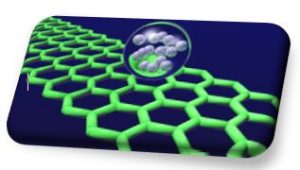
The shape and the size of the nanoparticles determine their properties, such as color. For this reason, gold nanoparticles properly designed can be used in nanomedicine , for example in the cancer diagnosis .
In these laboratories, the synthesis of gold nanoparticles is followed by experimental activities linked to the most current applications in nanomedicine, such as diagnostics and & nbsp; anticancer therapy. The concepts of light-matter interaction and & nbsp; optical spectroscopy are also introduced and treated through practical activities.
Forma e dimensione delle nanoparticelle ne determinano le proprietà, come il colore. Per questo motivo, nanoparticelle di oro opportunamente disegnate possono essere usate in nanomedicina, per esempio nella diagnosi dei tumore.
In questi laboratori, la sintesi di nanoparticelle di oro è seguita da attività sperimentali legate alle più attuali applicazioni in nanomedicina, come la diagnostica e la terapia anticancro. Sono introdotti e trattati tramite attività pratiche anche i concetti di interazione luce-materia e spettroscopia ottica.
Conductive Polymers
Materials for Teachers
 Teacher guide
Teacher guide
 Teacher guide-short
Teacher guide-short
Materials for laboratories
![]() Student guide-QTC 1
Student guide-QTC 1
![]() Student guide-QTC 2
Student guide-QTC 2
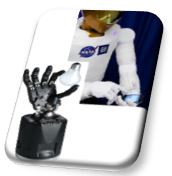
Technological applications require conductive materials increasingly lighter, cheaper and more versatile. Thanks to the science of materials, today it is possible to produce plastics, ceramics and conductive glasses. Composite polymeric materials , for example, have applications such as pressure sensors that can be integrated into artificial skin and robotics . In the proposed laboratories various types of easily available polymers are compared, which present different mechanisms of current conduction, from percolation to quantum tunneling effect . The quantitative analysis of the resistivity of a particular polymer will allow to verify directly and experimentally a fundamental principle of quantum mechanics! .
Le applicazioni tecnologiche richiedono materiali conduttori sempre più leggeri, economici e versatili. Grazie alla scienza dei materiali, oggi è possibile produrre plastiche, ceramiche e vetri conduttori. Materiali polimerici compositi, per esempio, hanno applicazione come sensori di pressione integrabili nella pelle artificiale e nella robotica. Nei laboratori proposti sono messi a confronto vari tipi di polimeri, facilmente reperibili, che presentano diversi meccanismi di conduzione di corrente, dalla percolazione all’effetto tunnel quantistico. L’analisi quantitativa della resistività di un particolare polimero permetterà di verificare direttamente e sperimentalmente un principio fondamentale della meccanica quantistica!.
Nanostructured surfaces – Hydrophobicity and lotus effec
Materials for Teachers
Materials for laboratories
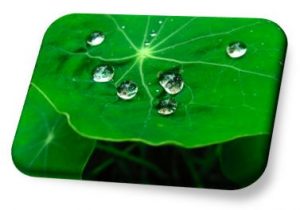
At nanoscale a new hierarchy between forces dominate due to the very small masses involved and the high percentage of atoms and molecules exposed to the surface . Consequently the effect of gravity is often negligible, while the electromagnetic and intermolecular forces dominate, with sometimes unexpected effects.
Atomic level manipulation allows the creation of new materials with predefined properties: an example is the superhydrophobicity ; of some materials made with topologically nanostructured surfaces. This materials are used in various fields, from microfluidics to solar cells or self-cleaning surfaces.In this laboratories the study of the Lotus effect is proposed using both natural materials and microstructured synthetic ones.
Alla nanoscala si registra una nuova gerarchia tra le forze, a causa delle piccolissime masse in gioco e dell’alta percentuale di atomi e molecole esposte alla superficie. Conseguentemente l’effetto della gravità è spesso trascurabile, mentre le forze elettromagnetiche e intermolecolari dominano, con effetti talora inaspettati,
La manipolazione a livello atomico permette di realizzare nuovi materiali con proprietà predefinite. Ne è esempio la superidrofobicità; così sono alcuni materiali realizzati con superfici topologicamente nanostrutturate ed impiegati in svariati campi, dalla microfluidica alle celle solari fotovoltaiche autopulenti. Nei laboratori è proposto lo studio dell’effetto Lotus.
> Vai ai laboratori sulle Superfici nanostrutturate e la bagnabilità
Nanotribology and molecular interaction
Materials for Teachers
Materials for laboratories
![]() Student self learning guide-nanotribology
Student self learning guide-nanotribology
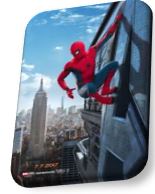
Geckos can be hung from the ceiling holding weights up to 10 times that of their body . Nature offers scientists solutions tested over millions of years . The key of Biomimetic is to analyze the solutions of nature, studying their principles and applying them in engineering context to do much better than nature . A field of study of biomimetic concerns the mechanisms of adhesion, studying many insects but especially geckos, this animals is able to & nbsp; run on walls and ceilings despite their weight: their legs develop an enormous adhesion force, which can be ‘turned off’ or ‘turned on’ in a few milliseconds- It is not a chemical effect because there is not glues under its feet and their feet “works also under vacuum”.The study of bio-inspired materials on gecko legs conveys the understanding of the extraordinary world of surfaces and atomic and molecular interactions.
We offer individual workshops but it is also available; a structured educational path that lends itself to a interdisciplinary project. The complete educational path, which we have called “Think like a scientist”, simulates an overall and rigorous scientific investigation, in its three main phases: research questions, investigation, data processing and results dissemination.You will find all the details in the “think like a scientist” menu section.
I gechi possono restare appesi al soffitto reggendo pesi fino oltre 10 volte quello del loro corpo . La natura offre agli scienziatisoluzioni testate in milioni di anni, la chiave di lettura dell biomimetica è analizzarle, studiarne i principi ed applicarli un contesto ingegneristico per fare molto meglio della natura. Un campo di studio della biomimetica riguarda i meccanismi di adesione, di molti insetti ma soprattutto dei gechi, capaci di correre su pareti e soffitti nonostante il loro peso: le loro zampe sviluppano un’ enorme forza di adesione, che può essere ‘spenta” o ‘accesa’ in pochi millisecondi; non è un effetto chimico perchè non c’è presenza di colle e funziona anche sotto vuoto. Lo studio dei materiali bioispirati alle zampe del geco veicola la comprensione dello straordinario mondo delle superfici e delle interazioni, atomiche e molecolari.
E’ possibile proporre i laboratori singoli ma è disponibile anche; un percorso didattico strutturato che si presta ad un progetto interdisciplinare quale ad esempio un’alternanza scuola lavoro realizzata all’interno dell’istituto scolastico; il percorso didattico completo, che abbiamo chiamato “pensare da scienziato”, simula un’indagine scientifica complessiva e rigorosa,nelle sue tre fasi principali: quesiti di ricerca, indagine, elaborazione dati e diffusione dei risultati.Troverete tutti i dettagli nella sezione del menù “pensare da scienziato”.
Vai al laboratorio Nanotribologia e legami atomici
A differnt Optics
We are working on
Materials for Teachers

Materials for laboratories
![]()
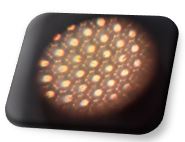
The study of matter at the nanoscale requires tools able” to see” the nanoscale; the development of nanotechnologies is closely linked to the evolution of microscopic investigation tools . Electron Microscopy and the Atomic Force Microscope are fondamentl for atomic study as well as the “old” optical investigation. In this section we propose the study of optics through micro or nano material surveys and we offer to the students the opportunity to understand optical phenomena, even complex ones, through different activities that exploit the smartphones and / or animations . The path can beapplied in flipped classroom teaching or used for problem cases studies. Particularly gratifying for students is the construction of an optical microscope using the smartphone camera and recycled materials.
The complete educational path, which we have called “A different optics” is on the “think like a scientist” section of this website.
Lo studio della materia alla nanoscala richiede strumenti in grado di “vedere” la scala nanometrica e lo sviluppo delle nanotecnologie è strettamente legato all’evoluzione degli strumenti di indagine microscopica. Fra questi sono fondamentali le microscopie elettroniche e il microscopio a forza atomica ma anche l’indagine ottica . La raccolta di laboratori di questa sezione propone lo studio dell’ottica attraverso indagini di materiali micro o nano ed offre agli studenti l’opportunità di comprendere fenomeni ottici, anche complessi, attraverso diverse attività che sfruttano lo smartphone e/o animazioni. Il percorso è fruibile anche in didattica capovolta o utilizzabile per casi problema. Particolarmente gratificante per gli studenti è la costruzione di un microscopio ottico sfruttando la fotocamera dello smartphone e materiali di recupero.
Il percorso didattico completo, che abbiamo chiamato “un’ottica differente” e strutturato è nella sezione pensare da scienziato.
Vai al laboratorio Un’ottica differente

